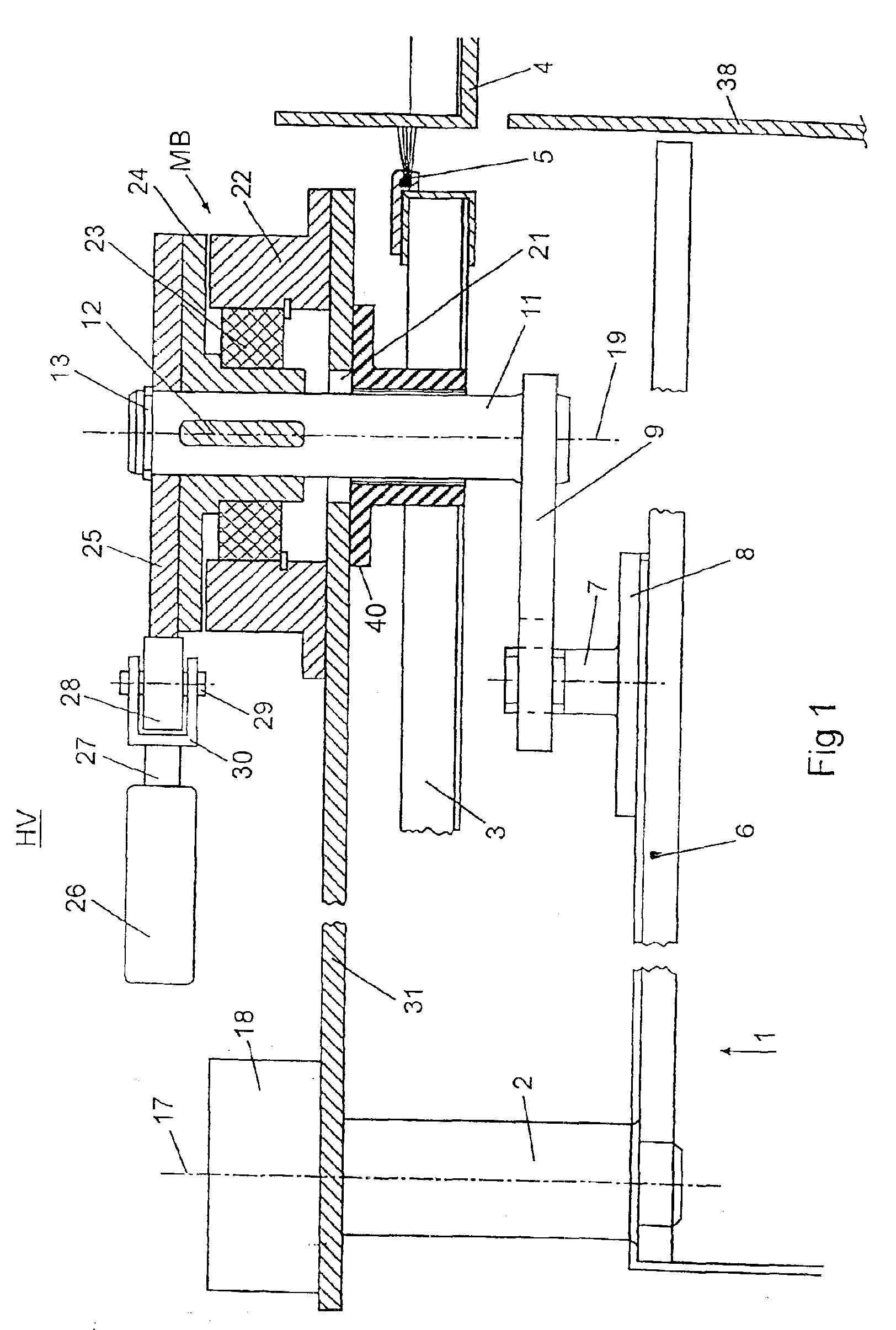Device for securing a door leaf against unintentional deflection
a technology for securing doors and windows, applied in carpet fasteners, dwelling equipment, applications, etc., can solve the problems of preventing the door from being moved at all, difficult to support doors of this type, and requiring a large amount of effort to construct a device of this type, so as to prolong the service life and improve the operation reliability of these devices.
- Summary
- Abstract
- Description
- Claims
- Application Information
AI Technical Summary
Benefits of technology
Problems solved by technology
Method used
Image
Examples
Embodiment Construction
[0032]A retaining device, designated “HV” overall in FIG. 1, is provided for each leaf 1 of a multi-leaf revolving door, shown in FIG. 4, which door is installed within the boundary walls 38, the retaining device being located opposite the upper area of the frame 6 of the leaf. Each leaf 1 is supported in such a way by part of a leaf hanger 2, which forms part of a leaf support 18, that the leaf can pivot around an axis 17. The leaf supports 18 are attached to the roof structure 31, which revolves along with the door and which is concealed by a ceiling 3, which extends between the boundary walls 4, which form a cylindrical jacket.
[0033]A brush type seal 5 is provided all the way around between the ceiling 3 and the boundary walls 4.
[0034]Each leaf 1 has its own retaining bolt 7, which is permanently connected by a flange 8 to the upper edge of the leaf frame 6. As FIG. 3 in particular shows, a fork arm 9 works together with each retaining bolt 7. This arm is rotatably attached to on...
PUM
 Login to View More
Login to View More Abstract
Description
Claims
Application Information
 Login to View More
Login to View More - R&D
- Intellectual Property
- Life Sciences
- Materials
- Tech Scout
- Unparalleled Data Quality
- Higher Quality Content
- 60% Fewer Hallucinations
Browse by: Latest US Patents, China's latest patents, Technical Efficacy Thesaurus, Application Domain, Technology Topic, Popular Technical Reports.
© 2025 PatSnap. All rights reserved.Legal|Privacy policy|Modern Slavery Act Transparency Statement|Sitemap|About US| Contact US: help@patsnap.com



